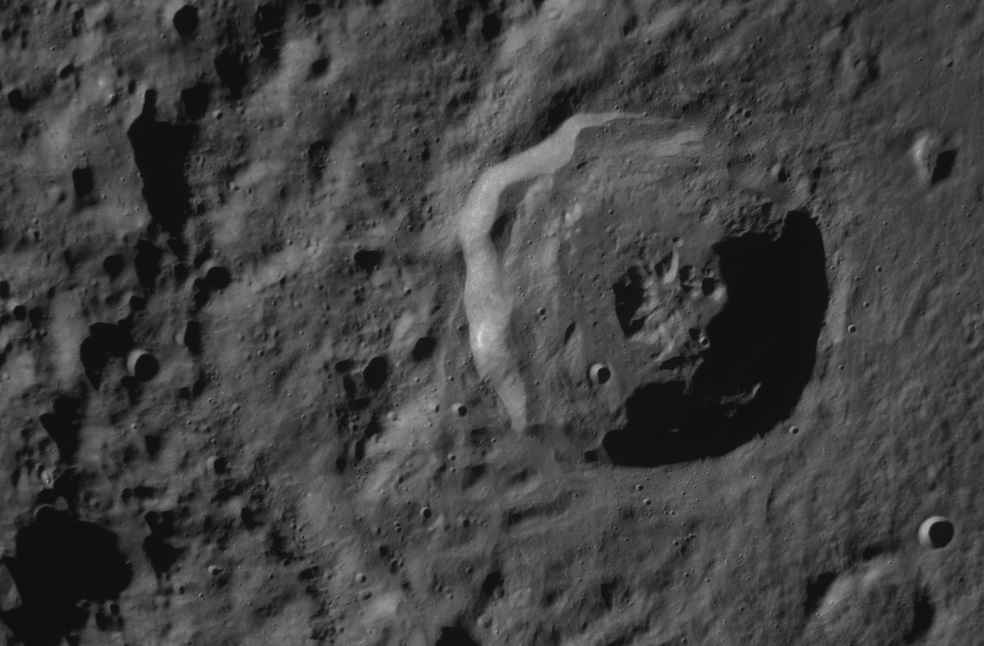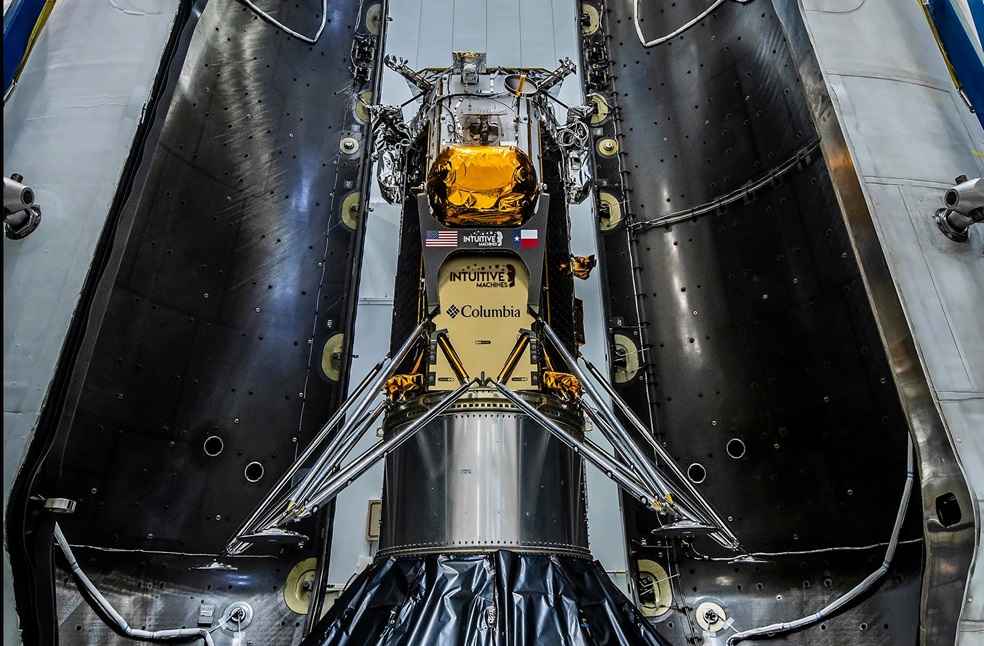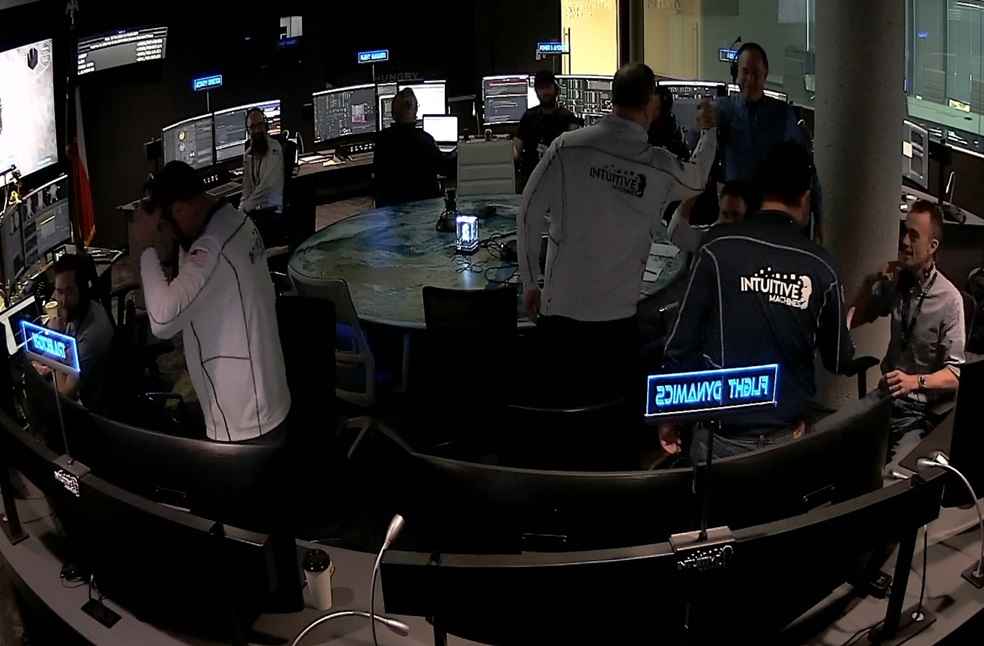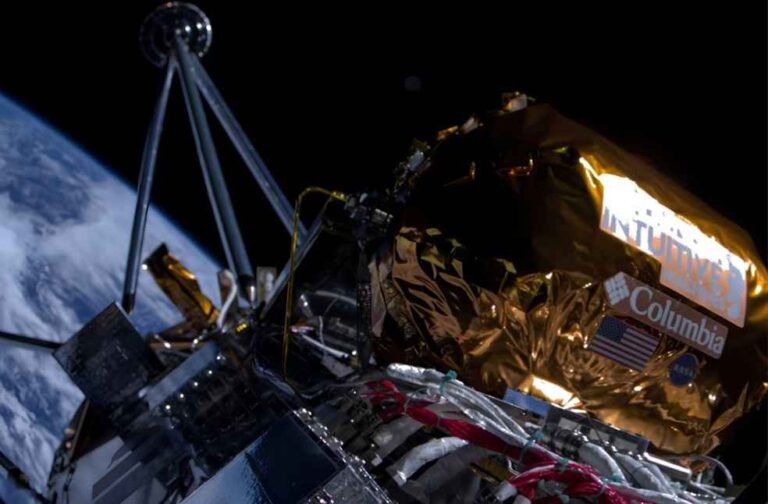United States: Intuitive Machines, a Houston-based space company, has made history by moon landing with its Odysseus robot. Odysseus landed near the lunar south pole. At first, it took a few minutes for controllers to confirm that the aircraft had landed, but they finally received a signal.
Flight director, Tim Crain announced that, “What we can confirm, without a doubt, is our equipment is on the surface of the Moon and we are transmitting.” The whole team at the company cheered and clapped upon hearing the news. It was a pivotal moment for the US space program, with significant implications for commercial space exploration.
Intuitive Machines has ended the United States’ half-century absence from the Moon’s surface. The last American hardware to touch down on lunar soil was during the final Apollo mission in 1972. Intuitive Machines was congratulated by NASA administrator Bill Nelson, who called the mission a “triumph.”

Nelson stated that, “The US has returned to the Moon. Today, for the first time in the history of humanity, a commercial company – an American company – launched and led the voyage up there. And today is the day that shows the power and promise of Nasa’s commercial partnerships.”
Before landing, controllers had to fix a technical problem that nearly jeopardised the mission. The ranging lasers on Odysseus, responsible for estimating the craft’s altitude and speed, malfunctioned. NASA purchased a room on Odysseus for the purpose of housing six scientific instruments. It had provided some experimental lasers on board, which engineers were able to patch into the navigation computers.
According to reports, Odysseus landed at 23:23 GMT. Initially, the robot failed to establish a connection, but after a few minutes, it finally managed to make a weak communication link. There might be some concerns about the status of the lander due to this. Intuitive Machines quickly reported that Odysseus was upright and transmitting data, including images, within hours.

The landing site is artificial terrain adjacent to a 5 km high mountain complex known as Malapert. It is the southernmost point on the Moon that a spacecraft has ever visited, at 80 degrees south. As part of NASA’s Artemis program, it’s on the shortlist of places to send astronauts later this decade. The area contains permanently shadowed craters where scientists believe frozen water may exist.
Lori Glaze, NASA’s director of planetary science, explained that, “The ice is really important because if we can actually take advantage of that ice on the surface of the Moon, that’s less materials we have to bring with us.”
“We could use that ice to convert it to water – drinkable drinking water – and we can extract oxygen and hydrogen for fuel and for breathing for the astronauts. So it really helps us in human exploration,” she added. NASA has installed six payloads on Odysseus, which serve as a combination of technical demonstrations and scientific experiments.

An investigation was conducted to study the nature of lunar dust. This dust caused problems for Apollo astronauts, scratching and clogging their equipment. The agency’s scientists are interested in better understanding how dust is kicked up by the craft after landing and then hangs above the surface.
A student camera system from Embry-Riddle Aeronautical University is one of the six commercial payloads aboard Odysseus, which should have been deployed when the spacecraft was still 30 meters above the surface of the moon.
The system is designed to capture selfies automatically when the robot lands on its own. American artist Jeff Koons also attached a box to the side of the lander containing 125 small stainless steel balls to represent the different phases of the moon.
SCIENCE | NASA’s PACE satellite: creates a leap in climate research



